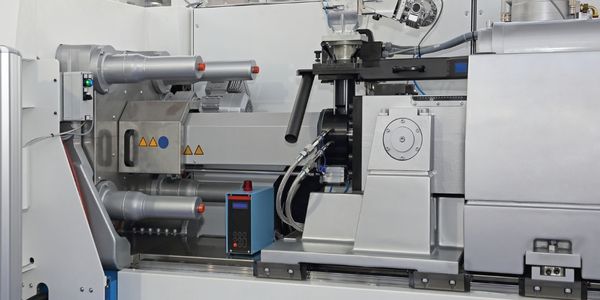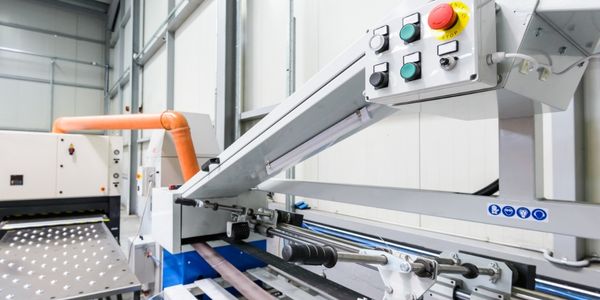Customer Company Size
SME
Region
- America
Country
- United States
Product
- Acumatica Financial Management
- Acumatica Distribution Management
- JAAS Advanced Manufacturing Software (JAMS)
- Scanco Warehouse for Acumatica
Tech Stack
- Cloud-based ERP
- Barcode scanning
Implementation Scale
- Enterprise-wide Deployment
Impact Metrics
- Productivity Improvements
- Cost Savings
Technology Category
- Platform as a Service (PaaS) - Application Development Platforms
Applicable Functions
- Discrete Manufacturing
- Warehouse & Inventory Management
Use Cases
- Inventory Management
- Manufacturing System Automation
Services
- Cloud Planning, Design & Implementation Services
About The Customer
FSC Lighting Inc. is a manufacturing company based in Rancho Cucamonga, CA. The company began as a fluorescent lighting manufacturer, later expanding to include LED lighting with emphasis on controls, automation and energy efficiency. Their projects range from commercial lighting to industrial parking garages and beyond. To benefit the local economy and surrounding community, FSC’s 30-person manufacturing operation is supported onsite by 10 adults with developmental disabilities and up to 200 offsite from Pomona Valley Workshop. For decades, the company ran on tribal knowledge and Sage DacEasy, which wasn’t set up properly, lacked accountability and couldn’t scale as the company grew.
The Challenge
FSC Lighting Inc. was operating with Sage DacEasy, an older system that didn't incorporate MRP and warehouse management and the rest of the manufacturing process. There were no inventory locations, and there wasn’t any accountability. The warehouse manager would bring a list of things he thought they might be low on, maybe, to order. The company had purchased a Sage replacement for DacEasy but had not implemented it yet. The version wasn’t robust enough for their business. It was only a replacement for DacEasy. The company wanted to find something they could do in the cloud, add an ERP and barcode scanning, and then add on from there.
The Solution
FSC Lighting chose Acumatica for its flexible, scalable, cloud-based ERP and excellent value. They also chose to implement JAAS Advanced Manufacturing Software (JAMS) and automate inventory and shipping processes with Scanco Warehouse for Acumatica, so the entire FSC operation now flows through Acumatica in real time. The company streamlined many of its processes as part of its Acumatica implementation. They now have location-based picking so anyone can bring the product into manufacturing. The company has also deployed Acumatica in its remote contract warehouse in Chicago as well as Pomona Valley Workshop’s facilities so it can drop ship from either location.
Operational Impact
Quantitative Benefit

Case Study missing?
Start adding your own!
Register with your work email and create a new case study profile for your business.
Related Case Studies.

Case Study
Plastic Spoons Case study: Injection Moulding
In order to meet customer expectations by supplying a wide variety of packaging units, from 36 to 1000 spoons per package, a new production and packaging line needed to be built. DeSter wanted to achieve higher production capacity, lower cycle time and a high degree of operator friendliness with this new production line.

Case Study
Robot Saves Money and Time for US Custom Molding Company
Injection Technology (Itech) is a custom molder for a variety of clients that require precision plastic parts for such products as electric meter covers, dental appliance cases and spools. With 95 employees operating 23 molding machines in a 30,000 square foot plant, Itech wanted to reduce man hours and increase efficiency.

Case Study
Hospital Inventory Management
The hospital supply chain team is responsible for ensuring that the right medical supplies are readily available to clinicians when and where needed, and to do so in the most efficient manner possible. However, many of the systems and processes in use at the cancer center for supply chain management were not best suited to support these goals. Barcoding technology, a commonly used method for inventory management of medical supplies, is labor intensive, time consuming, does not provide real-time visibility into inventory levels and can be prone to error. Consequently, the lack of accurate and real-time visibility into inventory levels across multiple supply rooms in multiple hospital facilities creates additional inefficiency in the system causing over-ordering, hoarding, and wasted supplies. Other sources of waste and cost were also identified as candidates for improvement. Existing systems and processes did not provide adequate security for high-cost inventory within the hospital, which was another driver of cost. A lack of visibility into expiration dates for supplies resulted in supplies being wasted due to past expiry dates. Storage of supplies was also a key consideration given the location of the cancer center’s facilities in a dense urban setting, where space is always at a premium. In order to address the challenges outlined above, the hospital sought a solution that would provide real-time inventory information with high levels of accuracy, reduce the level of manual effort required and enable data driven decision making to ensure that the right supplies were readily available to clinicians in the right location at the right time.

Case Study
Fully Automated Visual Inspection System
Tofflon has developed a fully automatic machine that uses light to inspect vials, medicine bottles, or infusion containers for glass fragments, aluminum particles, rubber grains, hairs, fibers, or other contaminants. It also detects damaged containers with cracks or inclusions (microscopic imperfections), automatically removing faulty or contaminated products. In order to cover all production processes for freeze-dried pharmaceuticals, Tofflon needed to create an open, consistent, and module-based automation concept.

Case Study
SAP Leonardo Enabling Rocket Science
At times, ULA has as many as 15 different operating systems dedicated to overlapping processes, such as rocket design, testing, and launch. Multiple systems created unnecessary costs and unwanted confusion among workers at offices, factories, and launch sites in different location. In order to improve collaboration and transparency during vital activities that directly influence mission success, ULA wanted to improve data sharing and streamline manufacturing processes.








